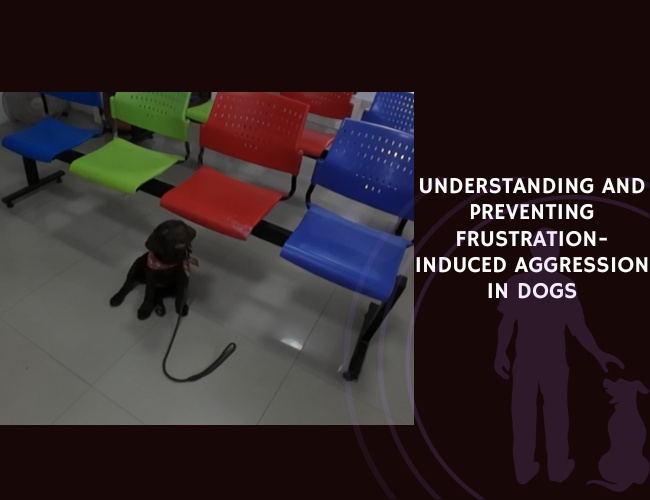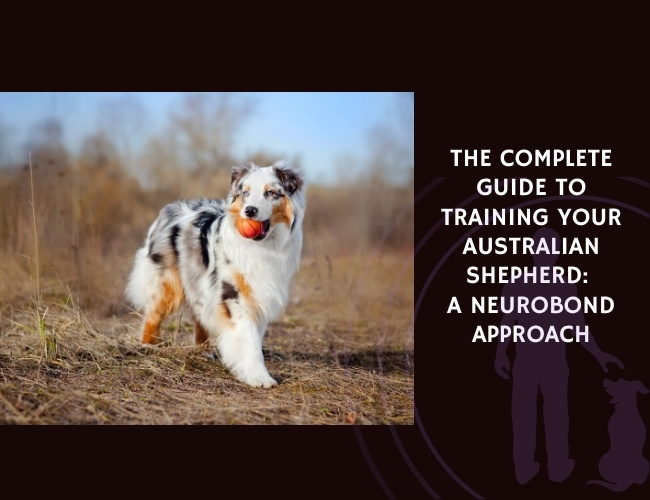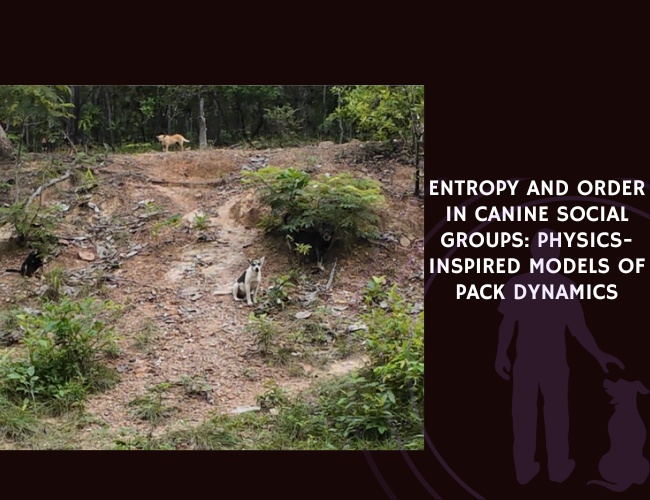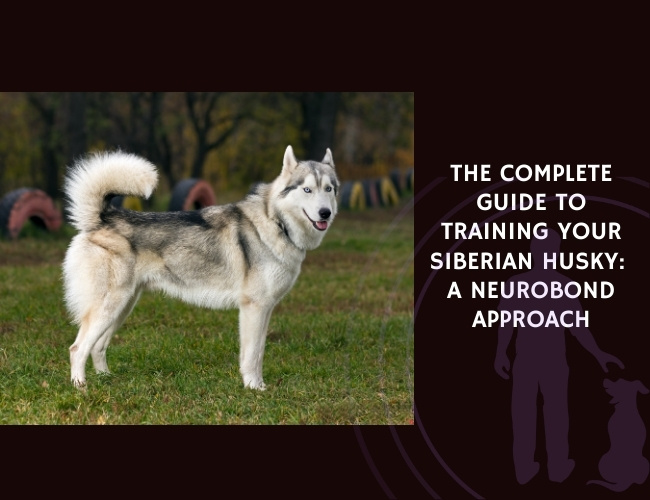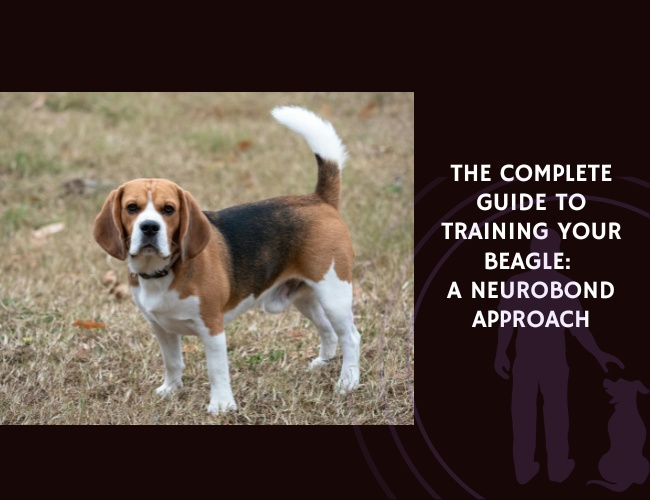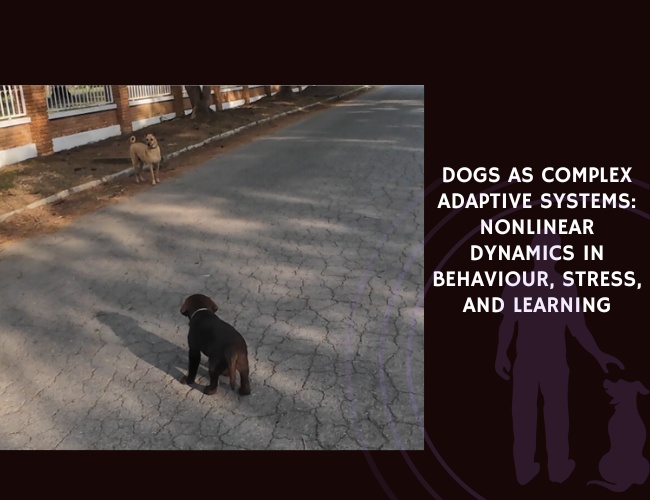Introduction: When Patience Runs Out
Have you ever watched your normally gentle companion suddenly snap over a delayed dinner or a toy just out of reach? You’re witnessing frustration-induced aggression—a complex behavioral response that affects countless dogs and their families worldwide. This challenging behavior pattern emerges when your furry friend’s emotional resources become overwhelmed, transforming everyday disappointments into explosive reactions.
Understanding frustration-induced aggression isn’t just about managing difficult moments; it’s about recognizing the intricate dance between your dog’s brain chemistry, genetic heritage, and daily experiences. Modern veterinary neuroscience reveals that these aggressive responses aren’t simply “bad behavior”—they’re the result of measurable neurochemical imbalances that we can address through targeted interventions. Let us guide you through the fascinating science behind these behaviors and, more importantly, show you practical pathways to prevention and healing.
The Neurochemical Symphony: Understanding Your Dog’s Brain
The Dance of Dopamine and Serotonin
Your dog’s brain orchestrates behavior through an elegant balance of chemical messengers, with dopamine and serotonin playing starring roles in emotional regulation. Think of dopamine as your dog’s “motivation molecule”—it drives their enthusiasm for treats, playtime, and all those tail-wagging moments of joy. Serotonin, meanwhile, acts as the brain’s natural mood stabilizer, helping your companion maintain emotional balance even when that squirrel refuses to come down from the tree.
When these neurotransmitters work in harmony, your dog navigates daily frustrations with relative ease. Dopamine keeps them engaged and hopeful, pushing them to try different strategies when the first attempt doesn’t work. Serotonin provides the emotional buffer, preventing minor disappointments from escalating into major meltdowns. But when this delicate balance tips—when dopamine surges without serotonin’s calming influence—frustration can quickly transform into aggression.
Research reveals that dogs experiencing frustration-induced aggression often show a specific pattern: elevated dopamine combined with depleted serotonin levels. This neurochemical storm creates a perfect recipe for impulsive, aggressive responses to even minor frustrations. You might notice this when your usually patient pup suddenly guards their food bowl aggressively or snaps when asked to wait for their walk.
The Cascade Effect: From Chemical Imbalance to Behavioral Crisis
Understanding how neurotransmitter imbalances translate into aggressive behavior helps us recognize early warning signs. When serotonin levels drop, your dog loses their natural “brake system” for impulse control. Simultaneously, unchecked dopamine activity intensifies their emotional responses, making every frustration feel catastrophic.
This neurochemical cascade affects multiple brain regions:
- The amygdala becomes hypersensitive, triggering fear and defensive responses
- The prefrontal cortex struggles to regulate emotional reactions
- The reward system becomes dysregulated, making your dog more reactive to disappointments
You might observe this cascade in action when your dog encounters a frustrating situation. First comes the intense focus (dopamine driving attention), then growing tension as the goal remains unmet, and finally—without serotonin’s moderating influence—an explosive aggressive response that seems disproportionate to the trigger.
Recognizing the Warning Signs: Behavioral Indicators
Early Frustration Signals
Before aggression erupts, your dog communicates their mounting frustration through subtle and not-so-subtle signals. Learning to read these early warning signs empowers you to intervene before the situation escalates. The key is recognizing patterns unique to your individual dog, as frustration manifests differently across personalities and breeds.
Watch for these progressive stages of frustration:
- Initial tension: Stiff body posture, intense staring, slight trembling
- Escalating stress: Whining, pacing, excessive panting without physical exertion
- Pre-aggression warnings: Lip licking, yawning, showing the whites of their eyes
- Critical threshold: Growling, air snapping, resource guarding intensification
Your dog’s tail tells a particularly revealing story during frustration episodes. Unlike the relaxed, sweeping wag of happiness, a frustrated dog often displays a stiff, high tail with rapid, short movements—almost vibrating with tension. This “frustration flag” signals that your furry friend is approaching their emotional limit.
Contextual Triggers and Patterns
Frustration-induced aggression rarely appears randomly; instead, it follows predictable patterns linked to specific contexts. Barrier frustration represents one of the most common triggers—picture your dog behind a fence, desperately wanting to greet (or chase) something just out of reach. This physical barrier creates an emotional pressure cooker, with arousal building until it explodes into aggressive barking, lunging, or redirected biting.
Resource-related frustration emerges when your dog anticipates something valuable but experiences delays or competition. You might notice this during:
- Meal preparation when food is visible but not yet accessible
- Training sessions when rewards are withheld too long
- Play sessions where toys are teased but not released
- Social situations where attention is given to other pets
Environmental predictability plays a crucial role in frustration tolerance. Dogs who experience inconsistent routines or unpredictable reward schedules often develop lower frustration thresholds, as their brains struggle to predict and prepare for outcomes. This uncertainty amplifies the neurochemical imbalances we discussed earlier, creating a heightened vulnerability to aggressive responses.
The Boredom-Frustration-Aggression Pipeline
When Under-Stimulation Becomes Dangerous
Picture your intelligent Border Collie, bred for centuries to work sheep across vast moorlands, now spending eight hours alone in a suburban apartment. This scenario illustrates the modern epidemic of canine boredom—a silent precursor to frustration and eventual aggression. Boredom isn’t just an inconvenience; it’s a welfare issue that fundamentally alters your dog’s neurochemistry and behavior.
The progression from boredom to aggression follows a predictable pathway:
- Chronic under-stimulation depletes dopamine receptor sensitivity
- Accumulated need for engagement creates internal pressure
- Minor triggers become magnified in the absence of appropriate outlets
- Frustration threshold drops dramatically
- Aggressive responses provide the intense stimulation the brain craves
This pipeline explains why many “sudden” aggression cases actually result from weeks or months of accumulated boredom. Your dog’s brain, desperate for stimulation, begins interpreting neutral situations as threats or challenges, leading to increasingly aggressive responses. The tragedy is that these dogs aren’t inherently aggressive—they’re neurologically starved for appropriate mental and physical engagement.
Breaking the Cycle Through Enrichment
Preventing the boredom-frustration-aggression pipeline requires proactive enrichment strategies that address your dog’s species-specific needs. Mental stimulation proves just as crucial as physical exercise, engaging neural pathways that maintain healthy neurotransmitter balance.
Consider implementing these enrichment categories:
- Cognitive challenges: Puzzle feeders, scent work, training new tricks
- Social enrichment: Supervised playdates, structured dog park visits
- Sensory experiences: Novel textures, sounds, and environments
- Physical variety: Different exercise types beyond standard walks
- Autonomous activities: Safe spaces for independent exploration
The beauty of proper enrichment lies in its dual action: it prevents boredom while simultaneously building frustration tolerance. When your dog regularly experiences manageable challenges with successful outcomes, their brain develops resilience to frustration. This neuroplasticity—the brain’s ability to rewire itself—offers hope for even dogs with established aggression patterns. 🐾

Breed-Specific Vulnerabilities and Genetic Factors
The Hereditary Component of Frustration Tolerance
Not all dogs face equal risk for frustration-induced aggression. Genetic research reveals that certain breeds carry neurochemical predispositions that affect their frustration tolerance and aggressive tendencies. Understanding your dog’s genetic heritage helps you anticipate vulnerabilities and tailor prevention strategies accordingly.
Working breeds like German Shepherds, Belgian Malinois, and Dutch Shepherds often display intense drive coupled with low frustration tolerance when their needs aren’t met. These dogs possess genetic variants that enhance dopamine activity—excellent for sustained work but problematic when that drive lacks appropriate outlets. You might notice your working breed becoming increasingly reactive when prevented from “doing their job,” whether that’s herding, protecting, or pursuing.
Terrier breeds present a unique challenge, as their genetic selection for tenacity and prey drive creates natural frustration when targets remain unreachable. The neurochemical profile of many terriers includes naturally elevated dopamine with variable serotonin production, explaining their characteristic determination that can tip into aggression when thwarted.
Guardian breeds like Rottweilers, Dobermans, and Mastiffs carry genetic variants affecting serotonin receptor sensitivity. This hereditary factor means even small drops in serotonin availability can trigger defensive aggression, particularly in frustrating situations involving resource protection or territorial challenges.
Individual Genetic Testing and Personalized Approaches
Modern genetic testing offers unprecedented insights into your individual dog’s neurochemical predispositions. Specific gene variants, particularly in the HTR1D serotonin receptor gene and dopamine-related pathways, can indicate increased aggression risk. While no single gene determines behavior, understanding your dog’s genetic profile helps predict which situations might trigger frustration-induced aggression.
Key genetic markers to consider:
- Serotonin transporter gene variants affecting mood regulation
- Dopamine receptor polymorphisms influencing impulse control
- COMT gene variations affecting stress hormone processing
- Oxytocin receptor genes influencing social bonding and aggression
This genetic information doesn’t doom your dog to aggressive behavior—instead, it empowers you to implement targeted prevention strategies before problems develop. Dogs with high-risk genetic profiles benefit from early intervention, structured training, and potentially preventive supplementation to support optimal neurotransmitter function.
Neurobiological Assessment and Diagnosis
Clinical Evaluation Methods
When frustration-induced aggression becomes concerning, professional assessment helps identify underlying neurochemical imbalances. Modern veterinary behaviorists employ sophisticated evaluation techniques that go beyond simple observation, revealing the biological basis of your dog’s struggles.
Behavioral assessment tools like the Canine Behavioral Assessment and Research Questionnaire (C-BARQ) provide standardized measures of aggression patterns. These validated instruments help differentiate frustration-induced aggression from other forms, guiding targeted intervention strategies. Your responses about specific scenarios—how your dog reacts when toys are taken away, when waiting for meals, or when restrained—paint a detailed picture of their frustration tolerance.
Biochemical testing offers direct insight into neurotransmitter function. Blood tests measuring serotonin and dopamine metabolites reveal whether your dog’s aggression stems from neurochemical imbalances. Dogs with frustration-induced aggression typically show decreased serum serotonin combined with elevated or dysregulated dopamine markers. These objective measures remove guesswork from diagnosis, enabling precise treatment planning.
The ADHD-Like Syndrome in Dogs
Recent research identifies a subset of dogs displaying ADHD-like symptoms—hyperactivity, impulsivity, and attention deficits—strongly linked to frustration-induced aggression. These dogs show consistently lower serotonin and dopamine concentrations compared to typical dogs, creating a neurochemical profile that predisposes them to explosive responses when frustrated.
You might recognize ADHD-like traits in your dog through:
- Inability to settle even after adequate exercise
- Hyperfocus on stimuli followed by aggressive frustration when access is denied
- Impulsive reactions without apparent thought or hesitation
- Attention-seeking behaviors that escalate to aggression when ignored
- Touch sensitivity leading to aggressive responses to handling
Understanding this syndrome transforms how we approach treatment. Rather than viewing these dogs as “badly behaved,” we recognize them as neurologically different, requiring specialized support to manage their unique brain chemistry. This perspective shift—from judgment to understanding—opens doors to effective intervention. 🧡
Prevention Strategies: Building Resilience
Environmental Management and Routine Structure
Creating an environment that minimizes frustration triggers while building tolerance requires thoughtful planning. Your home setup, daily routines, and interaction patterns all influence your dog’s neurochemical balance and behavioral responses.
Predictable routines provide the neurological scaffolding for frustration tolerance. When your dog can anticipate meal times, walks, and play sessions, their brain maintains steadier dopamine levels without the peaks and valleys that trigger aggression. This doesn’t mean rigid scheduling—rather, it’s about creating reliable patterns your dog can depend upon.
Strategic space management prevents many frustration scenarios:
- Visual barriers preventing fence-fighting with neighbor dogs
- Separate feeding stations eliminating resource competition
- Quiet zones where your dog can retreat when overwhelmed
- Baby gates creating boundaries without complete isolation
The physical environment should support your dog’s need for both stimulation and calm. Rotating toy availability maintains novelty without overwhelming choice. Designated “sniff zones” with hidden treats provide autonomous enrichment. Comfortable resting areas away from high-traffic zones allow stress recovery between activities.
Bored. Pressured. Reactive.
Boredom erodes stability, draining dopamine sensitivity and leaving the canine brain starved for stimulation. In this chemically depleted state, even minor inconveniences or changes feel amplified, setting the stage for emotional volatility that wouldn’t exist in a well-engaged dog.
Frustration builds pressure, transforming unmet needs into a constant undercurrent of tension. Without outlets, this pressure seeks release, lowering the threshold for reactivity and priming the dog to respond with disproportionate intensity to everyday triggers.
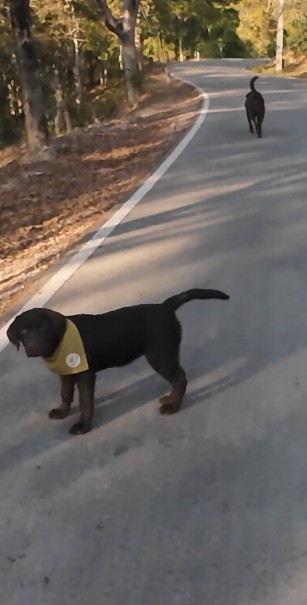
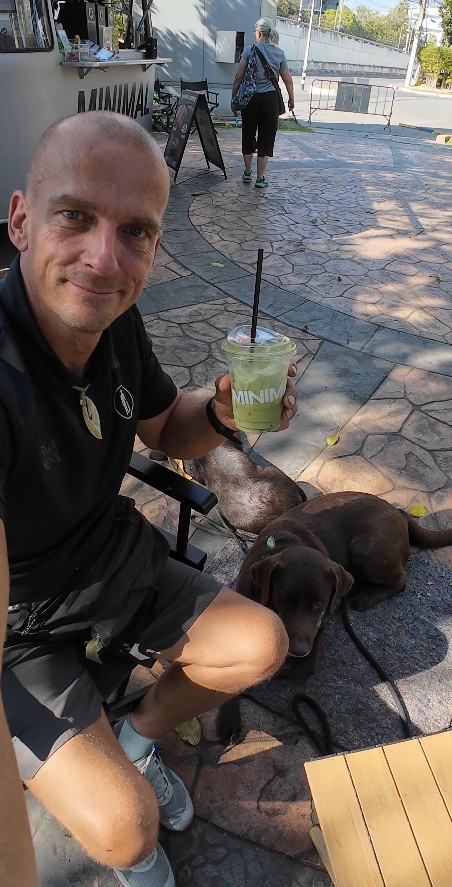

Aggression becomes outlet, providing the sudden, high-intensity stimulation the brain craves. In these moments, the behaviour is less about malice and more about neurological relief—a preventable outcome when mental and physical enrichment are woven into daily life.
Training Protocols for Frustration Tolerance
Building frustration tolerance requires systematic training that gradually challenges your dog while ensuring success. The goal isn’t to eliminate frustration entirely—that’s neither possible nor desirable—but to expand your dog’s capacity to cope with disappointment without aggression.
The “It’s Your Choice” protocol teaches impulse control through voluntary decision-making. Start with treats in your closed fist; your dog learns that backing away (not pushy behavior) earns the reward. This simple exercise rewires the frustration response, teaching that patience, not aggression, achieves goals. Progress gradually to more challenging scenarios—treats on the ground, toys in view, even dinner bowls placed but not yet released.
Relaxation protocols directly influence neurotransmitter balance. Teaching your dog to achieve deep relaxation on cue provides a tool for managing rising frustration. The process involves:
- Capturing natural calm moments with rewards
- Adding a cue word like “settle” or “easy”
- Gradually practicing in more stimulating environments
- Using the cue preventively when you anticipate frustration
Frustration tolerance games make building resilience fun:
- “Wait” exercises with increasing duration before rewards
- “Leave it” training with progressively more tempting items
- Puzzle feeders requiring persistence for food access
- Hide-and-seek games where the reward isn’t always immediate
Each successful navigation of minor frustration strengthens your dog’s neural pathways for emotional regulation. Think of it as mental weight training—each rep builds strength for handling bigger challenges.
Nutritional Support for Neurochemical Balance
The connection between diet and behavior extends far beyond simple energy levels. Specific nutrients directly influence neurotransmitter production and function, making nutrition a powerful tool for managing frustration-induced aggression.
Tryptophan, an essential amino acid, serves as the building block for serotonin production. Dogs with aggression issues often benefit from diets enriched with tryptophan sources like turkey, eggs, and certain fish. However, tryptophan requires careful balance with other amino acids for optimal absorption—simply adding more isn’t always effective.
Omega-3 fatty acids, particularly DHA and EPA, support neurological health and emotional regulation. These essential fats influence serotonin receptor sensitivity and reduce inflammatory processes that can exacerbate aggression. Cold-water fish, fish oil supplements, and algae-based sources provide therapeutic levels.
B-vitamins play crucial roles in neurotransmitter synthesis:
- B6 (pyridoxine) enables serotonin and dopamine production
- B12 supports overall neurological function
- Folate influences mood regulation pathways
Consider these nutritional strategies:
- Feed smaller, more frequent meals to maintain stable blood sugar
- Avoid foods with artificial colors and preservatives that may affect behavior
- Include probiotic support for gut-brain axis health
- Ensure adequate magnesium for nervous system function
Therapeutic Interventions: When Prevention Isn’t Enough
Pharmacological Approaches
When behavioral and nutritional interventions prove insufficient, pharmaceutical support can restore neurochemical balance while you work on long-term solutions. Modern veterinary medicine offers several evidence-based options for managing frustration-induced aggression.
Selective Serotonin Reuptake Inhibitors (SSRIs) like fluoxetine represent first-line pharmaceutical interventions. These medications increase serotonin availability in the synaptic cleft, effectively raising your dog’s frustration threshold. The effects aren’t immediate—expect 4-6 weeks before seeing significant changes—but many dogs experience dramatic improvements in frustration tolerance.
You might notice these changes as treatment progresses:
- Increased patience during training sessions
- Reduced intensity of reactions to triggers
- Better recovery after frustrating experiences
- Improved ability to redirect from fixations
Important considerations for SSRI therapy:
- Regular monitoring for side effects like appetite changes
- Gradual dose adjustments based on response
- Continued behavioral work alongside medication
- Planned weaning process when appropriate
Novel therapeutic approaches show promising results. Certain probiotic strains, particularly Lactiplantibacillus plantarum, demonstrate significant effects on aggression through gut-brain axis modulation. These “psychobiotics” influence GABA production and vagal nerve signaling, offering a gentler alternative or complement to traditional pharmaceuticals.
Integrated Treatment Plans
Successful management of frustration-induced aggression rarely relies on a single intervention. Instead, integrated treatment plans address multiple factors simultaneously, creating synergistic effects that exceed what any single approach could achieve.
A comprehensive treatment plan might include:
- Morning medication administration for steady-state levels
- Structured enrichment activities throughout the day
- Training sessions focusing on frustration tolerance
- Nutritional support with targeted supplements
- Environmental modifications preventing triggers
- Regular reassessment and plan adjustments
The timeline for improvement varies significantly between individuals. Some dogs show noticeable changes within weeks, while others require months of consistent intervention. Patience becomes essential—remember that you’re not just changing behavior but literally rewiring your dog’s brain chemistry.
Tracking progress helps maintain motivation during challenging periods:
- Keep a behavior diary noting triggers and responses
- Document successful frustration navigation
- Monitor medication effects and side effects
- Celebrate small victories along the journey

The Human Factor: Supporting Your Frustrated Friend
Managing Your Own Emotional Responses
Your emotional state profoundly influences your dog’s ability to manage frustration. Dogs excel at reading human emotions, and your stress, anxiety, or frustration can amplify their own emotional dysregulation. This creates a feedback loop where human and canine frustration escalate together.
Developing your emotional regulation skills directly benefits your dog:
- Practice deep breathing when you anticipate triggering situations
- Maintain calm body language even when your dog struggles
- Use a steady, quiet voice rather than shouting or pleading
- Take breaks when you feel your own frustration rising
Remember that your dog’s frustration-induced aggression isn’t personal—they’re not trying to dominate, spite, or challenge you. They’re experiencing a neurochemical crisis that overwhelms their ability to cope. This perspective shift from “my dog is being bad” to “my dog is struggling” opens space for compassion and effective intervention.
Building a Support Network
Managing a dog with frustration-induced aggression can feel isolating and overwhelming. Building a strong support network provides both practical assistance and emotional sustenance during challenging times.
Professional support team members:
- Veterinary behaviorist for medical management
- Certified dog behavior consultant for training protocols
- Regular veterinarian for health monitoring
- Positive reinforcement trainer for skill building
Community resources offer additional support:
- Online forums for owners facing similar challenges
- Local support groups for reactive dog owners
- Controlled socialization opportunities with understanding handlers
- Respite care options when you need breaks
Don’t underestimate the importance of self-care. Compassion fatigue is real when managing a challenging dog, and your wellbeing directly impacts your ability to help your furry friend. Schedule regular activities that recharge you, maintain social connections beyond dog-related contexts, and celebrate progress rather than fixating on setbacks.
Long-Term Management and Quality of Life
Realistic Expectations and Goal Setting
Living with a dog prone to frustration-induced aggression requires adjusting expectations while maintaining hope for improvement. Complete “cure” may not be realistic, but significant improvement in quality of life—for both you and your dog—is absolutely achievable.
Set graduated goals that build success:
- Initial: Recognizing triggers before aggression occurs
- Short-term: Successfully redirecting from 50% of frustration episodes
- Medium-term: Navigating previously triggering situations with support
- Long-term: Independent coping with moderate frustrations
- Ongoing: Maintaining gains while gradually reducing interventions
Success looks different for every dog. For some, it means playing peacefully at the dog park. For others, it’s simply walking past other dogs without exploding. Honor your individual dog’s progress rather than comparing to arbitrary standards.
Aging and Frustration Tolerance
As dogs age, their frustration tolerance often changes—sometimes improving with maturity, sometimes declining with cognitive or sensory changes. Understanding how aging affects neurochemistry helps you adapt management strategies across your dog’s lifetime.
Senior dogs may experience:
- Decreased serotonin production affecting mood stability
- Cognitive dysfunction increasing confusion and frustration
- Sensory decline creating communication challenges
- Physical discomfort lowering overall tolerance
- Medication sensitivity requiring dose adjustments
Proactive adjustments for aging dogs include:
- More frequent, shorter training sessions
- Environmental modifications for vision/hearing changes
- Pain management to address hidden discomfort
- Cognitive support through targeted supplements
- Adjusted expectations honoring their limitations
The silver lining? Many dogs naturally mellow with age, their reduced energy making frustration episodes less intense even when they occur. This natural progression, combined with years of management experience, often makes senior years surprisingly peaceful. 🐾
Case Studies: Success Stories and Lessons Learned
Case 1: Max the Frustrated Fence Fighter
Max, a three-year-old German Shepherd, developed severe barrier frustration after moving to a home with a chain-link fence. His frustration at seeing but not reaching passing dogs escalated to redirected aggression toward his owners. Blood tests revealed significantly depleted serotonin with elevated dopamine—classic frustration-induced aggression markers.
Intervention strategy:
- Immediate environmental management with privacy screening
- Fluoxetine therapy to address neurochemical imbalance
- Graduated exposure training with controlled distances
- “Look at that” training teaching calm observation
- Enrichment activities redirecting his working drive
After six months, Max could calmly watch dogs pass while on leash. The fence remained managed with visual barriers, but redirected aggression completely resolved. His owners learned to recognize early frustration signs, intervening before escalation became inevitable.
Case 2: Bella’s Boredom Battle
Bella, a Border Collie living in an apartment, developed frustration aggression after her owner’s work schedule changed. Eight hours alone with minimal stimulation created a perfect storm—boredom progressing to frustration, exploding into aggression during evening interactions.
The solution required lifestyle restructuring:
- Morning puzzle feeding extending breakfast to 30 minutes
- Midday dog walker providing social and physical exercise
- Evening training sessions channeling her intelligence
- Weekend agility classes satisfying her working heritage
- Probiotic supplementation supporting gut-brain health
Bella’s transformation took three months. The key wasn’t just adding activity but providing appropriate cognitive challenges matching her breed needs. Her aggression episodes decreased from daily to rare, typically only when routines were significantly disrupted.
Conclusion: Hope and Healing for Frustrated Dogs
Frustration-induced aggression represents one of the most challenging yet treatable behavioral issues in dogs. Understanding its neurochemical basis—the delicate dance between dopamine and serotonin—transforms how we approach prevention and treatment. Your dog isn’t choosing aggression; they’re experiencing a biological crisis that overwhelms their coping capacity.
The journey from frustration to peace requires patience, consistency, and often professional support. Some days will feel like stepping backward, but remember that neural rewiring takes time. Each small success builds toward lasting change, creating new pathways for emotional regulation that serve your dog throughout their lifetime.
Is your dog struggling with frustration-induced aggression? You’re not alone, and more importantly, there’s hope. Whether through environmental management, nutritional support, behavioral training, or pharmaceutical intervention, tools exist to help your furry friend find balance. The key lies in recognizing that behind every frustrated growl or snap is a dog asking for help navigating overwhelming emotions.
Take heart in knowing that with understanding, appropriate intervention, and time, most dogs with frustration-induced aggression can learn healthier coping strategies. Your commitment to understanding and addressing your dog’s neurochemical needs doesn’t just manage symptoms—it opens doors to a deeper, more trusting relationship built on compassion and scientific understanding. The path forward may not always be easy, but it leads to a destination worth reaching: a calmer, happier life for both you and your beloved companion. 🧡

